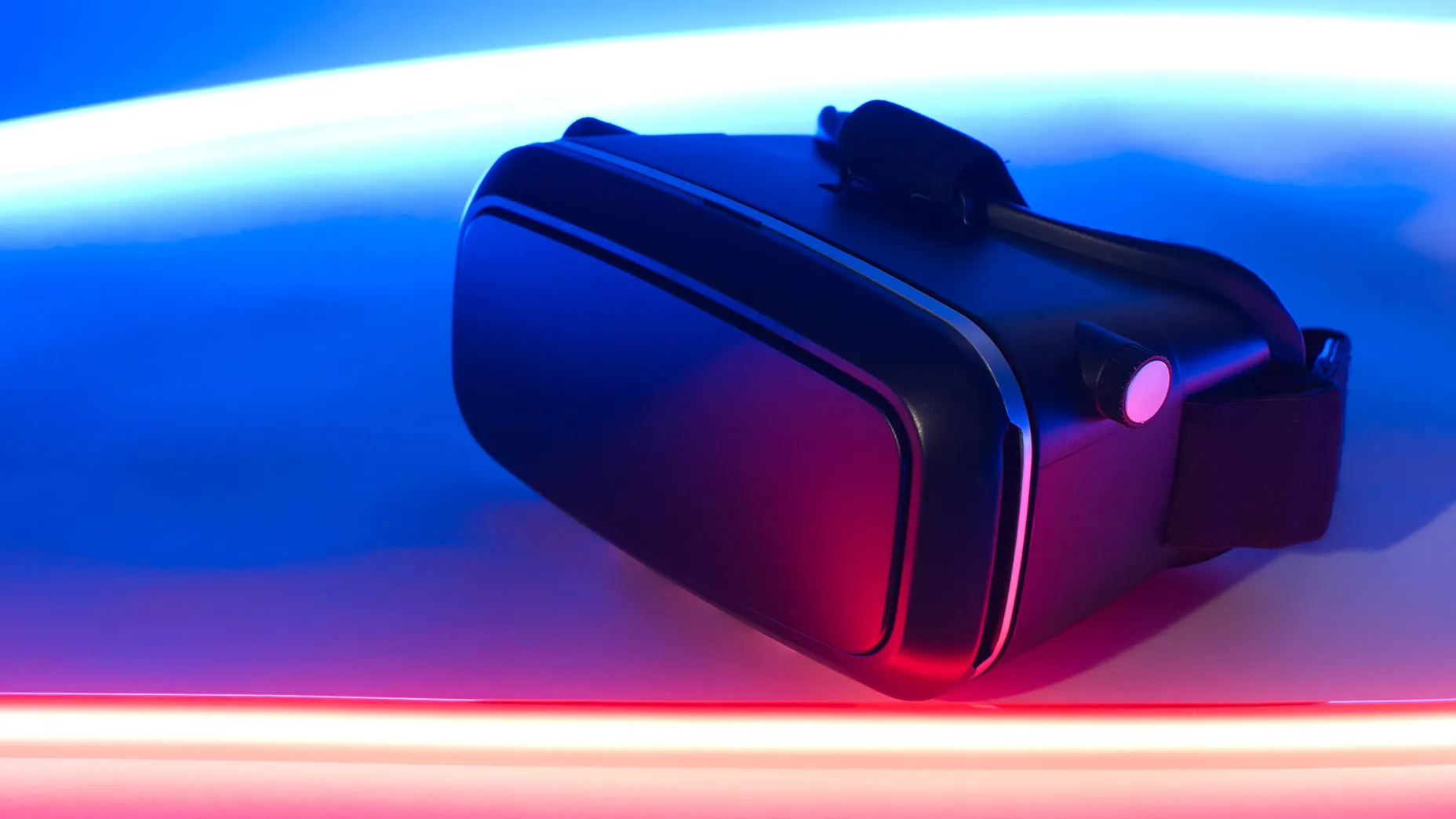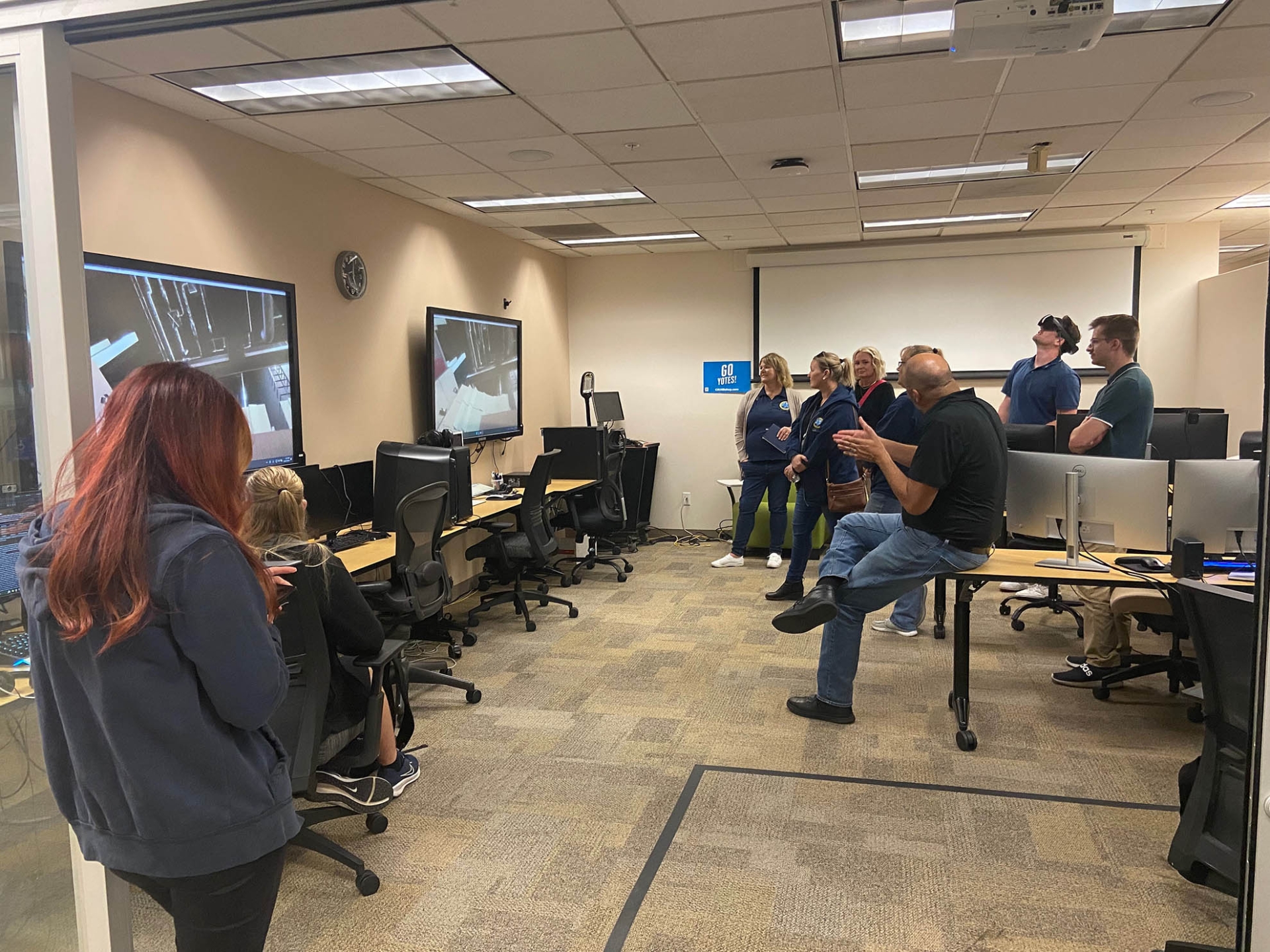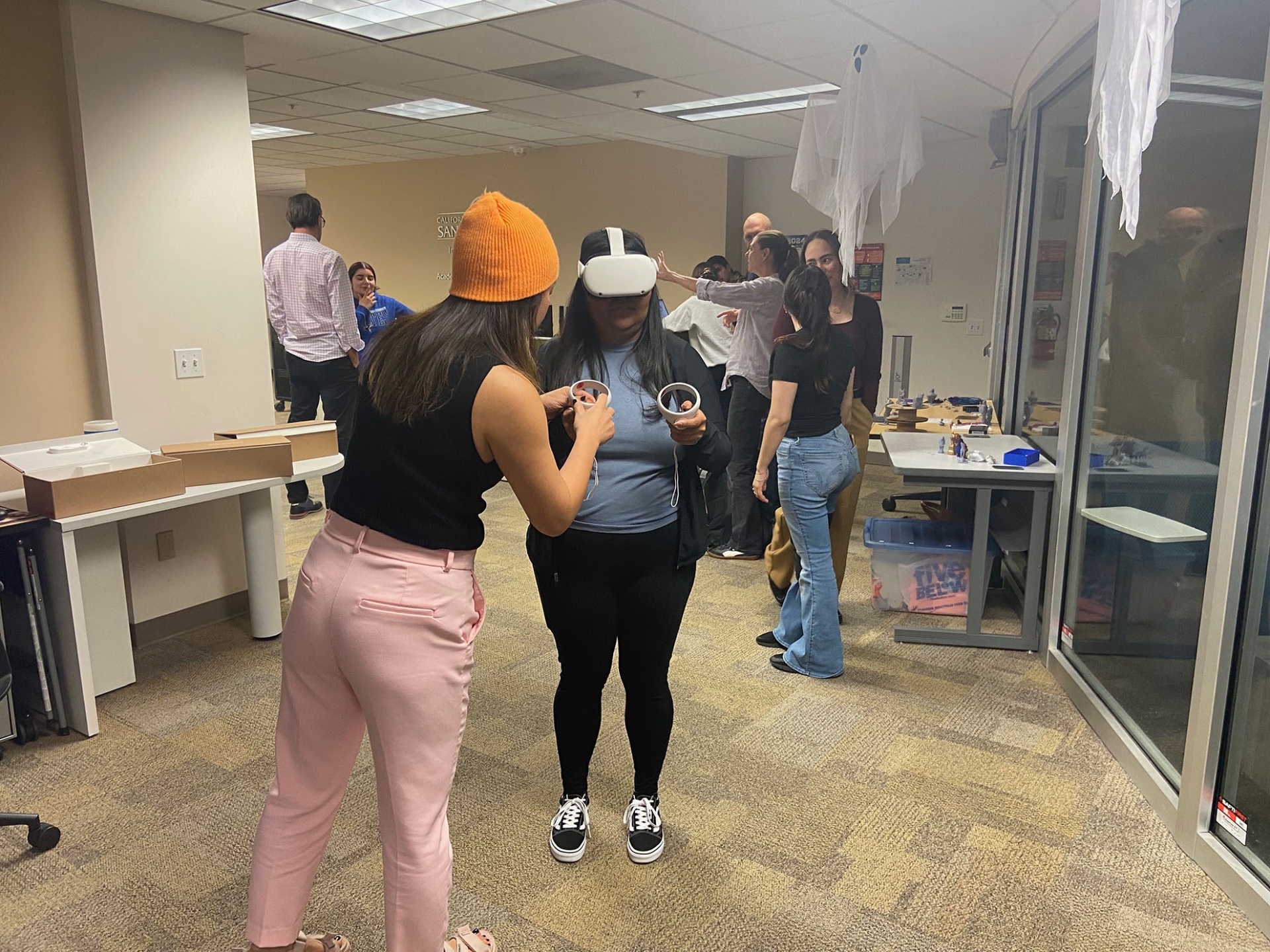Alan Llavore | Office of Marketing and Communications | (909) 537-5007 | allavore@csusb.edu

The Extended Reality for Learning (xREAL) Lab will be wrapping up another cycle of successful faculty fellowships for the fall 2024 semester. In the spring, the lab added six new faculty fellows who collaborated to conduct research and develop projects utilizing the lab’s focus technologies, such as immersive media (virtual reality, mixed reality, augmented reality, also known as "extended reality" or XR), artificial intelligence ("AI"), various forms of human-machine communication ("HMC") and robotics.
The faculty fellows represented all campus colleges: Nicolas Brunet (associate professor, psychology), Essia Hamouda (associate professor, information & decision sciences), Larry Mink (professor, chemistry & biochemistry), Zachary Powell (associate professor, criminal justice), Wagner Prado (associate professor, kinesiology), and Jordi Solsona-Puig (assistant professor, teacher education & foundations).
Each calendar year, the xREAL Lab works with faculty fellows, undergraduate and graduate students, affiliates across disciplines, community partners, and other academic institutions to provide a vision for the future of teaching and learning, meaningful mentorship and hands-on experience for the students, and sustainable innovation for the larger campus community.
Increasingly, the lab has been providing research support for faculty interested in pursuing grants, as well as matching student assistants with regional employers. The lab has also attracted interest from prospective students and CSUSB feeder schools. These initiatives are now paying off in innovative teaching and research.

For example, Brunet is focusing on uncovering the neural mechanisms behind visual information processing and oculomotor behavior, particularly how cognitive factors like attention, motivation, and experience shape the modulation of visual inputs. His research has such a strong affinity with visual perception — the “meat and potatoes” of virtual reality systems — that he has moved his lab in closer proximity to the xREAL Lab space located in PL-003.
Brunet described his work with the xREAL Lab this way: “I’m working to expand our capabilities into a fully equipped neurophysiology lab with functional Near-Infrared Spectroscopy (fNIRS) and advanced tools to study biological and physiological signals. One of my key projects, in collaboration with the xREAL Lab, investigates the neural and physiological biomarkers of hunger and satiety in obesity using immersive virtual reality and neuroimaging techniques.”
Powell, whose research focuses on police reform, accountability and police-civilian interaction, plans to partner with Brunet to examine sympathetic and parasympathetic responses of people during police-civilian interactions. To accomplish this goal, Brunet and Powell plan to simulate police-civilian interactions with 360-video and record a participant's heart rate, skin conductance and brain activity during each simulated interaction.
Prado continues to be interested in the possibilities of virtual reality to treat obesity in young people and has started several projects, some in partnership with other xREAL Lab fellows, to test whether controlled exposure to virtual reality triggers may play a role in devising preventive training programs. Similarly, Hamouda is looking at the possibility of using virtual reality to study addictive behaviors and devise curative regimes.

The xREAL Lab continues to play a vital role in inspiring new pedagogies for better learning. In partnership with Michael Desalvio (director of Environmental Health and Safety), Mink is testing the possible learning gains created by adding virtual reality supplementary instruction to lab safety courses.
Finally, Solsona-Puig is continuing his existing partnership with the lab to enhance pedagogical practices with immersive media and research the impact of immersive media. He aims to inspire his teacher candidates to create XR-enhanced interactive materials exercises as a resource for the elementary curriculum, including materials pertaining to the ancient wonders of the world. This resource will serve as a valuable tool for teachers, providing them with interactive materials to teach about the historical significance, cultural context, and architectural marvels of these ancient wonders. Students enrolled in his courses have worked with the xREAL to practice integrating technology, such as AR, into classroom planning and will be able to work with the lab once again during the fall 2024 semester.